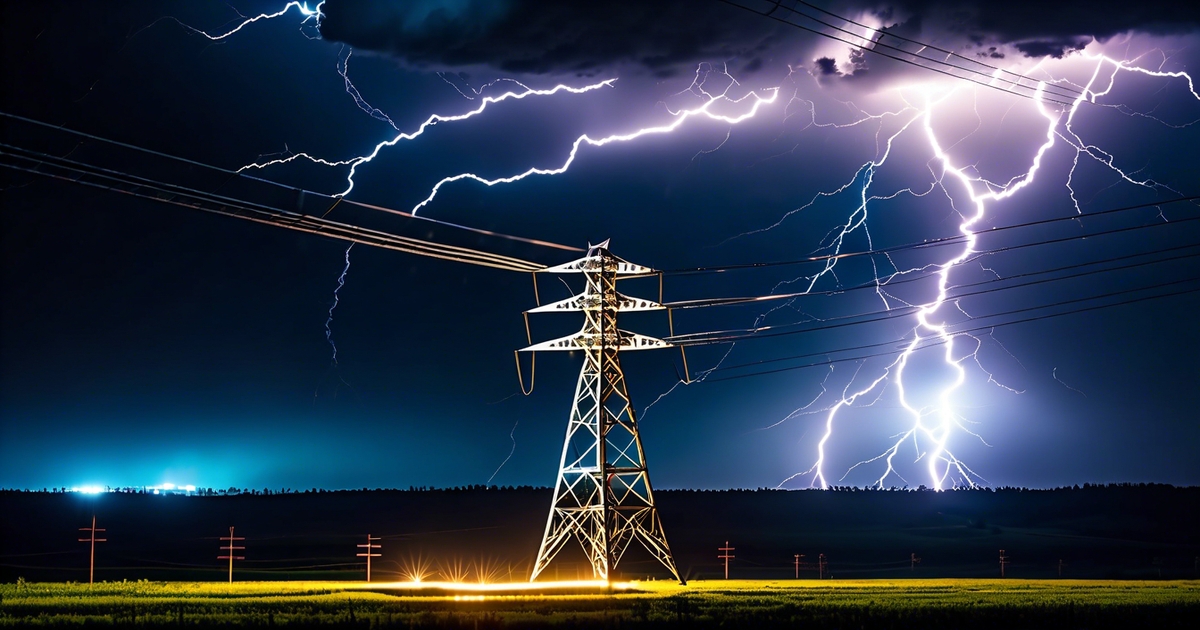Did you know that the average American household spends over $1,400 a year on electricity alone, contributing significantly to their energy bill and energy costs, which can be assessed through an energy audit? With energy costs and use rates constantly on the rise, finding ways to slash those bills and save dollars is like discovering hidden treasure, especially when it involves using much less electricity.
But here’s the kicker: how to get cheaper electricity rates on your energy bill isn’t as complex as it sounds, even after an energy audit or understanding power generation and dealing with your utility company. It’s all about knowing where to look and how to switch things up with blinds and curtains on the grid in different ways.
The average cost for commercial businesses regarding their electricity consumption, including charges for operating essentials like fuel and water heaters, can vary widely based on several factors, including the location of the business, the size and type of operation, and the specific needs of the business.
However, to provide a general sense of what businesses might expect regarding their electric bill, we can look at some national averages for electricity prices and considerations such as temperature and choosing the best plan that influences these costs.
In the United States, for example, the average commercial electricity rate is approximately 10.59 cents per kilowatt-hour (kWh) as of the latest available data. However, this rate of electricity prices can fluctuate significantly from state to state, affecting the electric bill and influenced by temperature.
For instance, businesses in states like Oklahoma and Washington enjoy some of the lowest electric bill rates, thanks in part to their access to abundant natural resources like water for power generation in their electricity plan price. Conversely, states like California and Connecticut have much higher rates due to a variety of factors including higher demand, regulatory costs, and the mix of energy sources used to generate electricity.
The size, type, and TOU rate of commercial operation also play a crucial role in determining electricity costs. A small retail shop will have vastly different energy needs and electric bills compared to a large manufacturing plant or a data center that operates 24/7, with considerations for temperature and water usage.
The latter types of businesses not only consume more electricity but may also require a more consistent and reliable energy supply, which can add to the overall cost, including water and temperature control rates at home.
Moreover, the specific needs of a business, such as the need for specialized equipment or cooling and heating requirements to maintain temperature, can further influence the electricity rate costs. Businesses that operate during peak hours may also see higher electric bill charges due to demand rates imposed by utility companies on their electricity plan.
To manage and potentially reduce these electricity costs, businesses often explore various strategies for their electric bill. These can include negotiating better rates with utility providers for a more affordable electricity plan, investing in energy-efficient equipment and lighting for the home, utilizing smart meters and energy management systems to better control usage and reduce the electric bill, and considering renewable energy sources like solar panels to offset some of their consumption from the grid.
In conclusion, while the average cost and rate for commercial businesses regarding electricity can provide a baseline understanding, it’s important for individual businesses to closely examine their usage patterns, and negotiate with providers.
From understanding your home electric usage patterns to exploring alternative energy sources, we’re diving into practical tips that’ll have you seeing lower numbers on your next bill without sacrificing comfort or convenience, ensuring a more favorable electric rate.
So, if shaving off some of those home expenses sounds good to you, stick around because this guide has got all the juice (and by juice, we mean electric power rate) you need.
Understanding Electricity Rates
Rate Influencers
Electricity rates are not random. They depend on several factors. Demand for electricity in homes changes with the seasons and time of day, affecting prices and rates. In summer, when more people use air conditioning at home, demand and electric bill rates go up. So do rates.
Fuel costs also play a big role in setting home electricity rate prices. If the price of coal or natural gas rises, so does the cost of producing electricity. This increase is passed on to consumers.
Lastly, maintaining and upgrading infrastructure like power lines and plants costs money, as reflected in the electric bill rate for homes. These expenses influence the rate we pay for our electric bill at home.
Government Role
Government regulations significantly impact electricity pricing. They ensure fair practices among utility companies.
Regulations can set limits on how much companies charge customers for their home electric bill. They aim to protect consumers from unfair electric bill pricing while allowing utilities to make necessary investments in home infrastructure.
Utility Calculations
Utility companies adjust their electric bill rates periodically based on various factors, including home energy usage.
-
Changes in fuel costs
-
Infrastructure needs
-
Regulatory adjustments
They calculate these rates to cover electric bill costs while complying with government standards.
Comparing Energy Choices and Electricity Rates in Deregulated States
Research Providers
Finding the right electricity provider is crucial. Start by researching available companies in your area. Look for their rates, plans, and customer service records.
List down providers you find reliable. Check electric bill reviews online to see what customers say about them. This helps narrow down options to those with good reputations for lowering your electric bill.
Compare Plans
After listing potential providers, compare their plans. Focus on contract length, rate stability, and renewable energy options to manage your electric bill.
-
Contract Length: Short-term or long-term? Decide based on your living situation.
-
Rate Stability: Fixed or variable rates? Fixed rates offer predictability.
-
Renewable Energy: Some companies provide greener options for your electric bill if that’s important to you.
Make a table comparing these aspects across different providers. This visual aid simplifies decision-making.
Understand Fees
Hidden fees can surprise you later. Ask each provider about all possible charges, including those on the electric bill, before signing up.
Look out for connection fees, disconnection fees, and monthly service charges on your electric bill. These electric charges can add significantly to your bill if not accounted for initially.
Ask questions until you’re clear on every fee mentioned in the contract terms. Transparency here saves money and frustration later on.
Use Online Tools
Several online tools help compare electricity rates effectively:
-
Price comparison websites give an overview of available plans.
-
Cost calculators estimate monthly bills based on usage patterns.
-
Regulatory commission sites provide detailed information about licensed suppliers.
These tools make it easier to understand how different factors affect your electric bill.
Negotiate Rates
Don’t hesitate to negotiate your electric bill with providers once armed with research data.
-
Mention better deals offered by competitors.
-
Highlight loyalty if switching from another electric bill plan within the same company.
-
Discuss bundling services for a discount if applicable.
Negotiating might secure a deal not advertised publicly.
When Electricity Rates Are Lowest
Seasonal Impact
Electricity rates often change with the seasons. In winter, people use more heat. In summer, they crank up air conditioning. This demand can drive prices up.
However, during spring and fall, electricity is usually cheaper. These “shoulder months” have mild weather. Less heating or cooling is needed. So, electricity demand drops.
Renewable energy also plays a role here. On sunny or windy days, solar and wind power can lower electric bill costs. This happens more in some seasons than others.
Weekends and Holidays
Another time you might find lower electric bill rates is during weekends and holidays. Why? Businesses close down or operate minimally on these days.
Less industrial activity means less electricity use overall. This reduced demand can lead to lower electric bill prices for consumers.
So planning high-energy tasks for weekends could save money on your electric bill.
Off-Peak Electricity Hours Explained
Understanding Off-Peak
Off-peak hours refer to specific times when electricity demand is lower. These periods vary by location due to different lifestyle patterns and climate conditions. For example, in a hot region, off-peak might be during the night when fewer people use air conditioning.
During off-peak hours, the cost per kilowatt-hour (kWh) can significantly drop. This encourages users to shift their energy consumption to these times. It’s an effective way for utilities to manage the overall demand on the grid.
Demand and Cost
The relationship between off-peak hours and electricity demand is straightforward: less demand equals lower costs. Utilities measure how much power is being used across their network at any given time. When fewer people are drawing power, it costs them less to provide it.
This system benefits both consumers seeking how to get cheaper electricity rates and utility companies aiming for balanced energy usage throughout the day. By understanding this dynamic, households can adjust their heavy-use activities—like laundry or charging electric vehicles—to off-peak times.
Utility Strategies
Utilities actively promote off-peak hour usage through various programs and rate plans designed around these low-demand periods. They might offer special pricing structures that incentivize customers who consume more power during these windows.
Some examples include reduced rates for overnight EV charging or lower tariffs for running major appliances late in the evening or early morning. These strategies help spread out energy use more evenly across 24 hours.
Identifying Cheapest Times of Day for Electricity
Common Low-Rate Periods
Most people don’t realize that electricity rates can vary throughout the day. Early morning and late night are often when you’ll find the lowest rates. This is because there’s less demand for electricity. Fewer people are awake using appliances or heating and cooling their homes.
For example, if you run your dishwasher at 4 AM instead of 7 PM, you might save money on your electric bill. It sounds simple, but it makes a big difference over time. The key is to adjust your routine slightly to take advantage of these low-rate periods.
Smart Meter Insights
Smart meters have changed how we understand our energy use. They provide real-time data on how much electricity you’re using and when. This information can help identify your cheapest times for using electricity.
By analyzing this data, you may discover that certain activities are best done at specific times to save money. For instance, charging electric vehicles overnight could be cheaper than during the day. Understanding these patterns allows for smarter energy consumption and lower bills.
Rate Schedule Knowledge
Understanding your utility’s rate schedule is crucial in finding cheaper electricity rates. Each company has different plans based on time-of-use (TOU). Knowing which plan you’re on can help you adjust accordingly.
Some utilities offer plans with lower rates during off-peak hours, encouraging customers to shift their high-energy tasks to these times.
-
Review your utility’s rate plan options.
-
Identify any off-peak hour discounts available.
-
Adjust your major energy-consuming tasks to align with these cheaper periods.
Tips for Lowering Your Electricity Bill
Energy-Efficient Upgrades
Switching to energy-efficient appliances and lighting can significantly reduce your electricity use. Look for products with the Energy Star label. They use less power than standard models. For example, an Energy Star fridge uses about 9% less energy.
Replacing incandescent bulbs with LED lights is another smart move. LEDs consume up to 90% less energy and last much longer.
Thermostat Management
Adjusting your thermostat settings can also lead to savings on your electric bill. In summer, setting it a few degrees higher when you’re not home saves energy. During winter, lowering it while you sleep or are away does the trick.
Smart thermostats make this easier by adjusting temperatures based on your habits and preferences automatically.
HVAC Efficiency
Regular maintenance of your HVAC system ensures it runs efficiently. Change filters every three months or as recommended by the manufacturer.
Consider having a professional service your air conditioning unit annually before peak usage seasons begin.
Practical Habits
Simple changes in daily habits can also lower energy costs:
-
Wash clothes in cold water.
-
Use a drying rack instead of a dryer.
-
Open curtains during winter days for natural warmth; close them at night to keep cold out.
These steps require minimal effort but offer noticeable reductions in electricity bills.
Appliances Care
Taking care of appliances extends their life and efficiency:
-
Clean the lint filter in your dryer after each load.
-
Keep the fridge and freezer full but not overcrowded for optimal air circulation.
-
Set water heaters to no more than 120°F (48°C).
These measures prevent excessive electricity use.
Window Solutions
Windows play a big role in controlling indoor temperature:
-
Installing blinds or curtains reduces heat gain during summer.
-
Sealing gaps around windows stops drafts from increasing heating needs in winter.
Both strategies help maintain desired temperatures without overworking HVAC systems.
Comparing Electricity Providers
Customer Service
Evaluating customer service is crucial when choosing an electricity provider. Good customer service can make a big difference, especially during outages or billing issues. Look for companies with high ratings in responsiveness and support.
Read reviews online and ask neighbors about their experiences. This will give you a clear idea of what to expect. Remember, cheaper rates don’t always mean better service.
Contract Terms
Understanding contract terms is key to avoiding surprises on your bill. Pay attention to the duration of the contract, penalties for early termination, and conditions for renewal.
Most contracts range from 6 months to several years. Shorter contracts might offer more flexibility but could come with higher rates.
Green Energy Options
Green energy options are becoming more popular among homeowners who want to reduce their carbon footprint. Many utility companies now offer plans that include power from renewable sources like wind or solar.
Choosing a green energy plan can sometimes cost slightly more but helps support sustainable power generation.
Leveraging Off-Peak Hours for Savings
Smart Scheduling
Scheduling high-energy tasks during off-peak times is a smart move. It can significantly reduce your electricity bill. Off-peak hours are when electricity demand is lower. This usually happens at night or early in the morning.
You can do laundry, run the dishwasher, or charge electric vehicles during these times. These actions use a lot of energy. Doing them when rates are lower will save you money.
Time-of-Use Plans
Time-of-use plans can help maximize savings during off-peak hours. These plans offer different rates based on the time of day, days of the week, and even seasons. The price varies with demand.
During peak times, prices are higher because more people need electricity. By using less power during these periods, you pay less overall.
To find the best plan, compare offers from various utility companies. Remember what we discussed about comparing providers earlier? Use that knowledge here too.
Automation Tools
Investing in smart home devices makes saving easier and automatic. Smart thermostats adjust heating and cooling based on your habits and weather forecasts. They ensure you’re not wasting energy when no one’s home or while sleeping. Smart plugs turn appliances off automatically during peak hours. These devices work together to minimize your usage without extra effort from you.
By shifting how and when we use power, we can all contribute to reducing demand during peak times. This helps keep costs down for everyone.
Here’s a quick recap:
-
Schedule heavy appliance use for late night or early mornings
-
Choose a time-of-use plan that fits your lifestyle
-
Invest in smart devices to automate savings
Following these steps won’t just cut down your bills; it also supports a more sustainable energy system by balancing out the load on our grids.
Final Remarks
Navigating the world of electricity rates isn’t as daunting as it might seem. You’ve got the tools and knowledge now—understanding rates, knowing when and how to use electricity to your advantage, and even how to pick the right provider.
Think of it like a game where you’re always one step ahead, armed with insider tips to keep your bills low without living in the dark. It’s all about playing it smart; using off-peak hours, comparing providers like you’re on a shopping spree, and never settling for less because, hey, who doesn’t love saving some extra cash?
So go ahead, take control of your electricity usage, and start seeing those bills shrink. Remember, every little action counts towards a fatter wallet and a happier planet. Ready to zap those high costs? Let’s make it happen. Dive deeper, ask questions, and never stop looking for ways to power up your savings game.
Frequently Asked Questions
How can I understand electricity rates better?
Electricity rates can seem like a maze, but they’re essentially the cost per unit of electricity. Think of it as the price tag on your electric juice!
What does it mean to compare energy choices in deregulated states?
In deregulated states, you’ve got options—like choosing between chocolate and vanilla ice cream. Comparing means looking at different providers to find who offers the tastiest deal.
When are electricity rates usually lowest?
Electricity rates often dip during off-peak hours—think late night or early morning. It’s like shopping during a sale; everything is just cheaper.
Can you explain off-peak electricity hours?
Off-peak hours are like the quiet time at a party—when demand drops, so do prices. These are golden times for using more power without breaking the bank.
How do I identify the cheapest times of day for electricity?
Keep an eye on your utility’s schedule—it’ll show when rates hit their low points, kind of like tracking happy hour specials!
Any quick tips for lowering my electricity bill?
Sure! Switch off what you’re not using, upgrade to LED bulbs, and tap into those off-peak hours. It’s all about being smart with your energy use—like turning down snacks before dinner.
How does comparing electricity providers help me save money?
It lets you shop around for deals that best fit your needs and budget—kinda like hunting for bargains in a thrift shop but for your electric bill.



